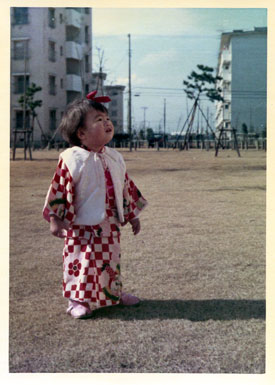The necessary components for proper wearing of a kimono include:
- chikara nuno (collar adjustment)
- date jime/date maki (waistband/undersash)
- eri shin (half-collar lining)
- hadajuban (undershirt)
- han eri (half-collar)
- kari himo (temporary cord)
- kimono belt
- koshi himo (sash)
- nagajuban (under-kimono)
- obi
- obi age (bustle sash)
- obi ita (obi stay)
- obi jime (obi cord)
- obi makura (obi pad)
- susoyoke (half-slip)
- tabi (pure white, split-toe socks)
- towels, pads
- zouri (sandals)

Of course, you are free to wear or use a kimono, obi or other traditional Japanese garment in whatever way you wish. However, some might find it interesting that there are some very formal and codified suggestions for proper kimono appearance in Japan.
Some of these guidelines for single women are to adjust the kimono to conceal the collarbones, having the neckline at the nape in a V-like shape, and wearing the obi higher than a married woman would.
Some guidelines for married women include not being allowing the bustle sash to be too showy or prominent, having a smaller obi pad than a single woman, and having a U-shape neckline at the nape.
For more on how to wear or put on a kimono, we recommend the kimono books detailed on our site.